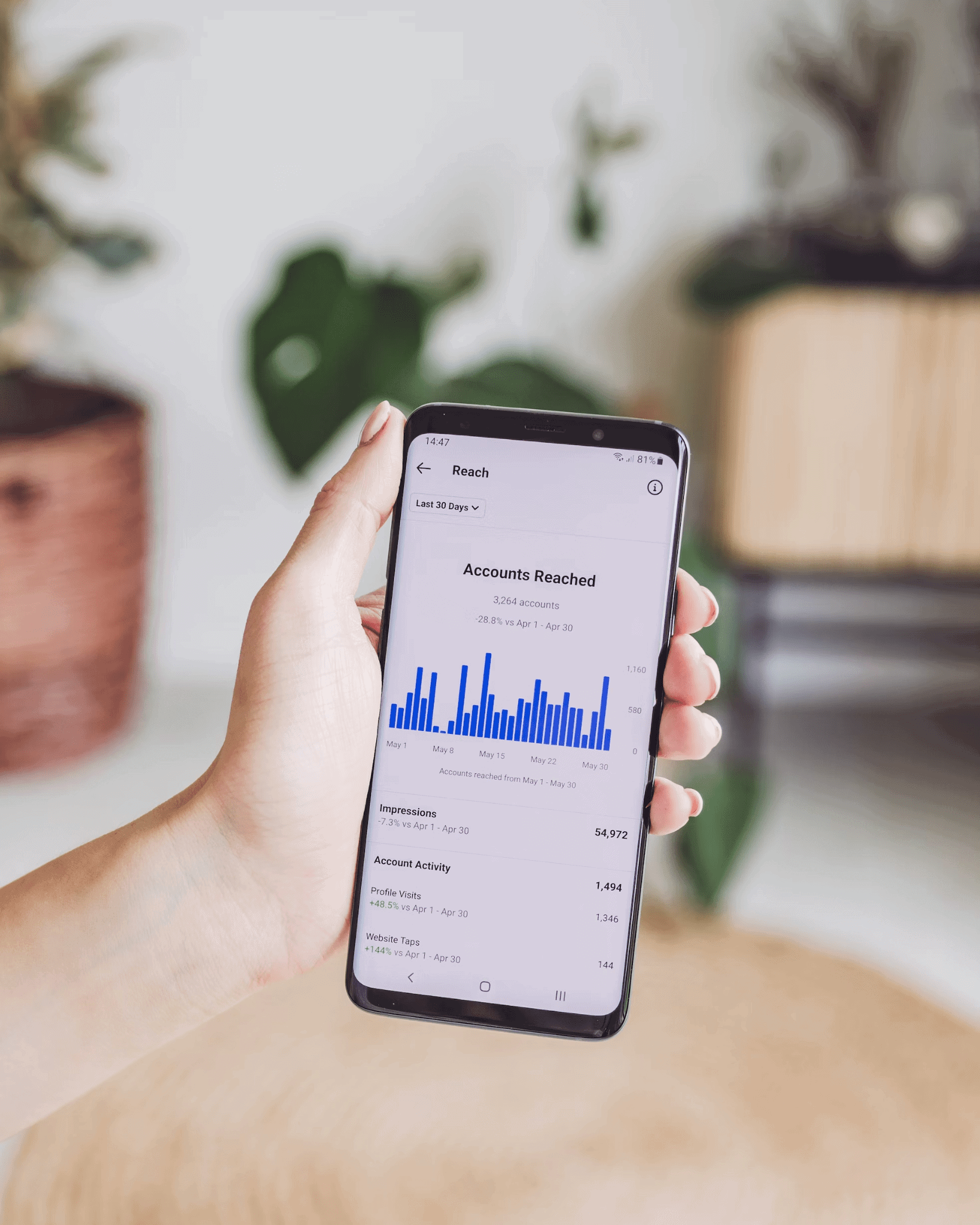Got a sneaky suspicion that your social media efforts could be working harder for you? You’re not alone. In the digital age, social media platforms have transformed from virtual hangouts into robust marketplaces bustling with potential leads and brand loyalists. This requires unbiased market research.
But how do you distill all those posts, likes, shares, and comments into tangible business value? In other words, how do you measure your Social Media ROI?
In this guide, we’ll break down the process of measuring your social media ROI, not with overcomplicated jargon or eye-watering spreadsheets, but with straightforward steps and relatable examples.
Whether you’re a social media newbie or a seasoned digital strategist, you’ll learn how to track, analyze, calculate, and most importantly, understand the real impact of your social media marketing on your bottom line. Ready? Let’s dive in.
Setting Clear Objectives
Before you dive into the deep end of data and numbers, you’ve got to start with a clear map of where you want to go. Setting clear objectives is the foundation of any results-driven social media strategy. This not only guides your activities but also shapes how you measure success.
Start with SMART Goals
Let’s talk SMART – Specific, Measurable, Achievable, Relevant, and Timely. SMART goals keep your strategy on track and give you benchmarks to measure against. Want to increase brand awareness? Set a specific goal for growth in follower count by a particular date. Looking to drive website traffic? Target a measurable increase in referral traffic from your social profiles.

Types of Social Media Objectives
Awareness: If you’re aiming to get your brand in front of more eyeballs, objectives could involve growing your follower count or increasing post reach and impressions. It’s all about being seen.
Engagement: This is about sparking conversations and building community. Objectives might include boosting likes, shares, comments, or the average engagement rate. When your audience talks back, it’s a great sign.
Leads: Perhaps you want social media to be a lead generation machine. In this case, set goals around the number of sign-ups, content downloads, or email subscriptions that originate from your social presence.
Sales: At the end of the day, a business thrives on sales. Objectives here will revolve around the number of direct sales resulting from social media or the conversion rate for purchases that start with a social click.
By clearly defining what success looks like from the outset, you’ll be able to measure progress and understand the effectiveness of your social media efforts. Keep your goals aligned with your overall business objectives, and you’ll be on the right path to quantifying your social media ROI.
Understanding Key Metrics
Cracking the code of social media ROI involves understanding the key metrics relevant to your goals. Here’s a lowdown on what to track:
1. Engagement: This includes likes, comments, shares, and clicks. It’s a solid indicator of how your content resonates with your audience. High engagement rates can lead to increased brand loyalty and customer retention.
2. Reach and Impressions: Reach is the number of unique users who have seen your post. Impressions are the total number of times a post shows up in someone’s timeline. These metrics help you grasp the extent of your content’s visibility.
3. Conversion Rate: How many of those engagements turned into a desired action? Whether it’s signing up for a newsletter, making a purchase, or downloading an app, optimizing for conversions is where the tangible value comes into play.
4. Click-Through Rate (CTR): This measures how frequently people click on the call-to-action in your post. It’s a crucial metric since clicks reflect a higher level of interest and a potential for conversion.
5. Cost Per Click (CPC) and Cost Per Thousand Impressions (CPM): If you’re using paid promotion, CPC and CPM are critical to understanding the efficiency of your spend. Lower costs typically signify higher ROI, as long as the quality of traffic remains high.
6. Customer Lifetime Value (CLV): This metric predicts the net profit attributed to the entire future relationship with a customer. Increased CLV might be a long-term goal of your social media marketing strategy.
7. Social Sentiment: Analyze the emotional tone of the messages and comments. This can help you understand the public’s perception of your brand, which indirectly influences ROI.
8. Brand Mentions: The frequency with which your brand is mentioned on social media can provide insights into brand awareness and reputation.
9. Share of Voice (SOV): Measure your brand’s visibility in comparison to competitors. A higher SOV often translates to greater market presence and potential ROI.
Choosing the right mix of these metrics will depend largely on your campaign objectives. However, the power truly lies in interpreting these numbers to make informed decisions – it’s not just about collecting data but analyzing and understanding how that data reflects the efficacy of your social media strategies.

The ROI Calculation
To quantify your social media ROI, you can use a basic formula:
ROI = (Return – Investment) / Investment * 100
This calculation gives you a percentage that represents the return relative to the cost.
Let’s break it down:
Determine Your Return: This involves attaching a monetary value to every lead, click, or sale generated from social media. You may need to track user actions through analytics tools that trace social media as the origin of these actions.
Calculate Your Investment: This includes the total cost of your social media marketing efforts — ad spend, employee time, content creation costs, social media tools, and any other related expenses.
Here’s an example:
You spent $1,000 on your social media campaign.
The campaign generated $3,000 in sales.
ROI = ($3,000 – $1,000) / $1,000 * 100 = 200%
This means you earned $2 for every $1 spent.
Considerations in Calculation:
Attribution: Establish a clear link between social media efforts and the return. Tools like Google Analytics and UTM codes can help track these conversions effectively.
Long-Term Value: Account for the long-term value of new customers acquired through social media – it’s not all about immediate returns.
Non-Monetary Benefits: Not all returns can be measured in dollars. Consider the value of increased brand awareness or improved customer satisfaction which can result in monetary gains over time.
Accuracy: Ensure you are factoring in the correct costs and returns. Underestimating either can skew your ROI and misguide your future strategy.
Ultimately, while the basic ROI calculation is simple, interpreting the context and the quality of the returns takes nuance. Keep refining your parameters to capture the complete picture of your social media’s financial impact.

Analyzing and Interpreting Data
Once you’ve gathered your key metrics and calculated the ROI, your journey into data interpretation begins. This step is all about turning numbers into insights:
1. Identify Trends: Look for patterns in your data. Are certain types of content consistently performing better? Is engagement higher on specific days or times? These insights can help tweak your strategy for better performance.
2. Benchmarking: Compare your metrics against your past performance or industry standards. It helps to determine if you’re on track or if there are areas that need attention.
3. Understand the ‘Whys’: Behind every data point is a user action. Dive deeper to understand why users may be behaving a certain way. For instance, a high CTR with low conversions could suggest that while your messaging is compelling, there might be an issue on the landing page.
4. Customer Journey Mapping: Analyze how social media impacts the various stages of the customer journey. This helps in understanding which platforms and types of content are most effective at different touchpoints.
5. Correlation vs. Causation: Just because two metrics move together doesn’t mean one caused the other. Stay critical and avoid drawing hasty conclusions. Look for evidence that supports a true cause-effect relationship.
6. Segment Your Data: Break down your data by demographics, behaviors, or timeframes. This segmentation can unveil valuable insights into specific audiences and what drives their actions.
7. Leverage Qualitative Data: Numbers tell part of the story, but qualitative feedback from social media can provide context to the quantitative data, revealing sentiment and perception towards your brand.
8. Adjust and Test: Use your insights to adjust your strategy and then test to see what works best. Keep monitoring to see if these adjustments lead to improved performance.
9. Report Meaningfully: When communicating your findings, tie your data back to business objectives. Show how social media efforts translate to the bottom line or other key business goals.
By thoughtfully analyzing and interpreting your social media data, you can make informed decisions that not only demonstrate ROI but also fuel continued growth and engagement for your brand. Remember, the true value lies not just in the data you collect but in the insights you draw from it and the actions you take as a result.
Common Pitfalls and How to Avoid Them
Venturing into social media analytics can be fraught with potential missteps. Watch out for these common pitfalls:
1. Ignoring Context: Raw numbers can be misleading. Always consider the context—market trends, algorithm changes, or current events can all affect your metrics.
How to Avoid: Regularly review external factors that could influence your data and adjust your analysis accordingly.
2. Over-Focusing on Vanity Metrics: Likes and followers might look good on paper, but they don’t necessarily translate to business value.
How to Avoid: Focus on metrics that tie directly to your business goals, like lead generation, conversions, and engagement quality.
3. Isolating Social Media Data: Your social media efforts are one piece of a larger marketing puzzle. Assessing them in isolation can skew the bigger picture.
How to Avoid: Integrate social media data with other marketing data for a more comprehensive view.
4. Underestimating the Conversion Path: It’s rare that a customer’s first interaction with your brand leads to a sale. Recognize that your social efforts may contribute to conversions down the line.
How to Avoid: Implement attribution modeling to understand and credit the various touchpoints leading to conversion.
5. Jumping to Conclusions: With so much data available, it’s easy to incorrectly attribute causation where there might just be correlation.
How to Avoid: Test different hypotheses and analyze various factors before concluding what’s driving performance changes.
6. Not Acting on Insights: Collecting and analyzing data is pointless if you don’t leverage the insights gained to optimize your strategy.
How to Avoid: Set up a process for translating insights into action. Regularly review your strategy and adjust based on what the data tells you.
7. Data Overload: It’s easy to get overwhelmed by the sheer amount of data available.
How to Avoid: Prioritize metrics that align with your goals, and create a dashboard to monitor them efficiently.
8. Forgetting the Human Element: Data doesn’t account for the emotional and psychological factors at play in social media interactions.
How to Avoid: Supplement data insights with real feedback from your audience for a fuller understanding.
By acknowledging these pitfalls and implementing strategies to avoid them, you’ll set the stage for a more accurate and beneficial measurement of your social media ROI. Remember, it’s a continuous process of learning, adjusting, and refining. Stay agile and your analytics efforts will pay off.

Optimizing Social Media Strategy Based on ROI
Armed with ROI insights, you can fine-tune your social media strategy to amplify your successes and correct your course where necessary.
Here’s how you can use ROI data to shape your approach:
1. Allocate Budget Wisely: Identify which platforms and campaigns are providing the best ROI. Direct more of your budget towards these and consider scaling back underperforming initiatives.
2. Content Refinement: Look at which types of content (videos, blogs, images, etc.) are yielding higher returns. Tailor your content strategy to produce more of what resonates with your audience and drives results. AI content repurposing helps transform existing contents into new formats fast.
3. Timing and Frequency: Determine the optimal times and frequency for posting based on when your content performs best. If ROI is higher on specific days or times, adjust your posting schedule with the help of various social media management tools to match.
4. Audience Targeting: Use demographic and behavioral insights to refine who you target. Investing in audiences that have a higher likelihood of converting can improve your ROI.
5. Experimentation: ROI data can encourage a culture of experimentation. Test new platforms, formats, or messaging strategies, while keeping a close watch on how they affect your ROI.
6. Conversion Path Optimization: If your pathway to conversion is delivering ROI, make it even smoother. If it’s not, use data to identify friction points and make necessary adjustments.
7. Cross-Channel Integration: Your social media shouldn’t operate in a silo. Integrate it with other marketing channels. For instance, retargeting users on social media after they’ve visited your website can enhance overall ROI.
8. Training and Tools: Invest in training for your team to better understand ROI measurement and analytics tools. Using the right tools can streamline the process and unearth deeper insights, leading to better decisions.
9. Listening and Engagement: Use ROI data to fine-tune your approach to customer engagement. High ROI interactions can guide you on how to communicate effectively across various platforms.
10. Reporting Structure: Create clear and actionable ROI reports that inform strategy. Share these insights across your organization to ensure that stakeholders understand the impact of social media.
By reflecting on your ROI data and responding with strategic moves, you can create a feedback loop that keeps your social media strategy tightly aligned with business outcomes. Continuously refining your approach based on this data will help maintain or improve your social media ROI over time.
Wrapping Up
And there you have it—the ultimate guide to measuring and optimizing your social media ROI.
Remember, social media is a dynamic and ever-evolving landscape; so too should be your approach to measuring its value.
Armed with the right metrics, a solid grasp of ROI calculation, and an eye for data analysis, you can turn insights into action and ensure that your social media investment truly pays off.
